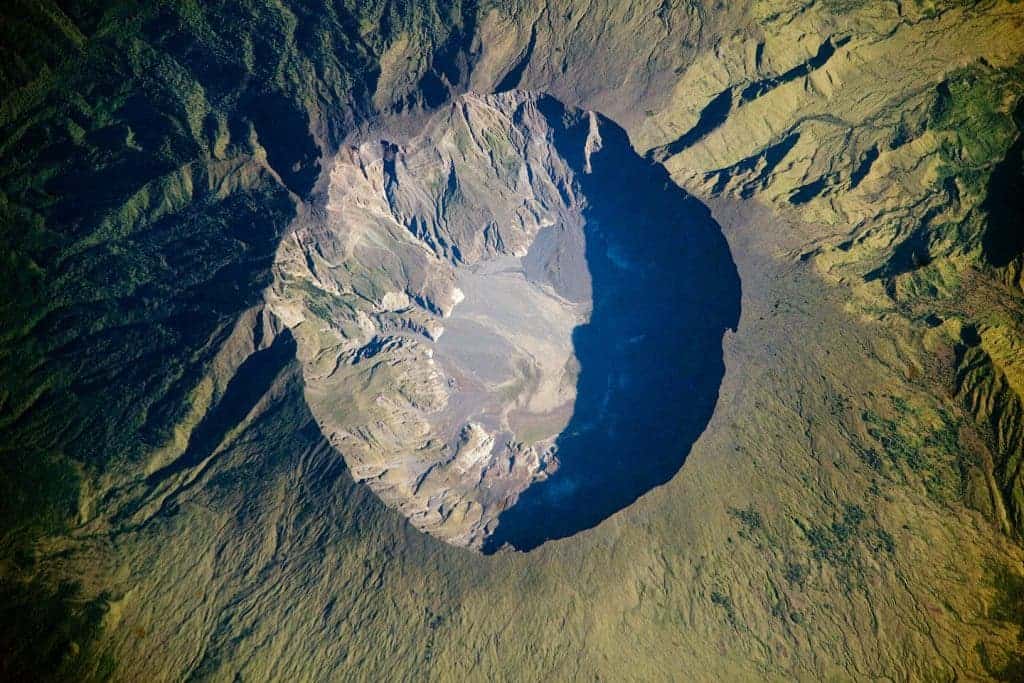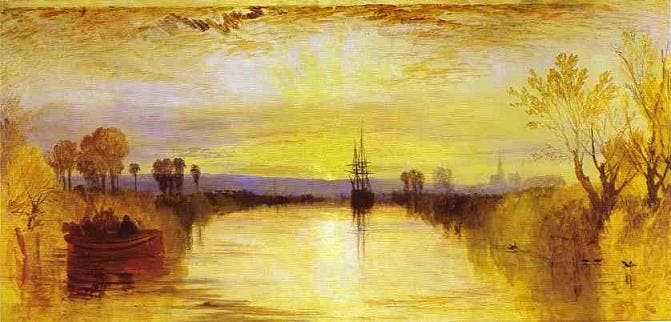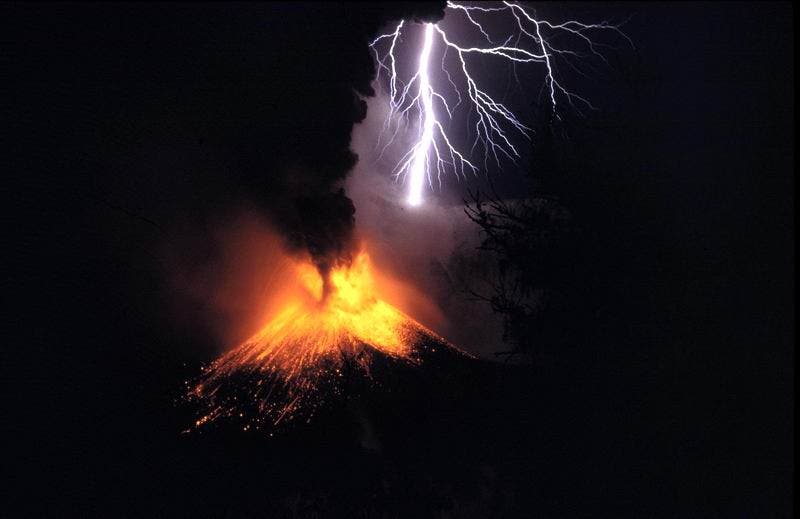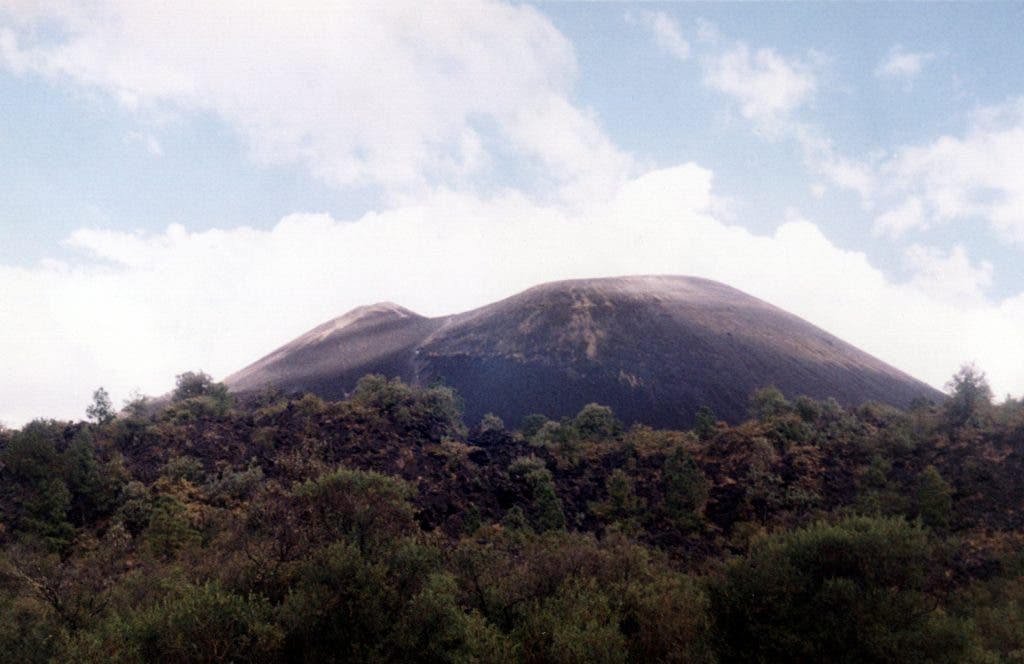Volcanoes are some of the most amazing geological features but quite often, they’re misunderstood or not understood at all. Here we’ll get to know them a bit better, starting with the basic facts and the moving onto cool and surprising facts, and of course, continuing with everyone’s favorite (from a distance): eruptions.
Basic Volcano Facts
1. Volcanoes are ruptures in the Earth’s crust. Our planet’s crust is split into 17 major tectonic plates, and almost all volcanoes occur at the edges between these plates.
2. There are three types of volcanoes: stratovolcano (conical volcano consisting of layers of solid lava), cinder cone volcano (steep hill of tephra that accumulates around the vent) and shield volcano (built entirely or almost entirely from fluid lava vents).

4. We’re still not sure how many volcanoes there are in the world, but geologists identified about 1300 active volcanoes, not counting underwater volcanoes.
5. The biggest volcano on Earth is Hawaii’s Mauna Kea. At 33,500 feet (10,210 meters) it’s even taller than the Everest, but most of it is underwater, so its height relative to sea level is lower. However…
6. The tallest volcano in the solar system is on Mars. Olympus Mons on Mars is a shield volcano with a height of nearly 22 km (16 mi), almost three times higher than Mount Everest. It was able to grow this big because Mars doesn’t have active tectonic plates.

7. Earth isn’t the most active place in the solar system – Jupiter’s moon Io is the most volcanic body in the solar system. Astronomers recently witnessed two huge eruptions, possibly largest than any ever recorded on our planet.
8. The two most active volcanoes in the world are Etna in Italy and Hawaii’s Kilauea, depending on how you judge. Etna has been active in the past 3,500 years, but it’s still being used for agriculture because its slopes are so fertile. Kilauea has been in a state of constant eruption since 1993, and more than 90% of its surface is made from young lava.

9. Volcanoes can be scary, but supervolcanoes can be downright terrifying. St. Helens, one of the largest eruptions in history spewed up 0.25 cubic kilometers of volcanic material while the last known eruption from the Yellowstone caldera ejected 4000 times more – 1000 cubic kilometers.
Volcano Eruption Facts
10. There are three types of volcanic eruptions: magmatic eruptions (involving gas decompressions that propel the eruption forward), phreatic eruptions (superheating of steam via contact with magma, often with no ejected material) and phreatomagmatic eruptions (compression of gas within magma, the complete opposite of magmatic eruptions).
11. How dangerous are volcano eruptions? In 1815, the volcano Tambora exploded in Indonesia. All vegetation on the island was destroyed and projected into the sea. Uprooted trees mixed with pumice ash, washed into the sea and formed rafts up to 5 km (3.1 mi) across. The eruption sent material into the stratosphere, at an altitude of more than 43 km (27 mi). Over 10,000 people were killed directly by the eruption, but that was only the beginning.

Over 40,000 people were killed by hunger and disease in neighboring islands, and the effects were felt globally. The following year, 1816 was called “the year without a summer”, as snow fell in the summer in Boston and New York. Crops were destroyed, widespread famine was reported in Asia, Europe and the Americas. It’s impossible to estimate the total damage, but up to 100,000 people lost their lives following this eruption. A Massachusetts historian summed up the disaster: “Severe frosts occurred every month; June 7th and 8th snow fell, and it was so cold that crops were cut down, even freezing the roots.” Which leads us to another question:
12. What if a supervolcano erupts? Geologically, it won’t mean much for the planet. At a geological scale, supervolcanoes erupt all the time… but for humans, the effects would be ghastly. The tens or hundreds of thousands of lives lost will pale in comparison to what will happen. The world will be thrown into a nuclear-type winter, where food availability could become a luxury (because volcanic eruptions can block sunlight, lowering global temperatures). Famine and widespread disease will emerge for at least a couple of years, as no country has the food reserves to last that long; it’s extremely difficult to gauge the full impact such an eruption might have. However, you shouldn’t waste much sleep on this – it’s extremely unlikely for such an eruption to take place in the next few thousand of years.
13. The last known supervolcano eruption was the Toba eruption 74,000 years ago, when more than 2,500 cubic kilometers of magma were erupted. The largest eruption in recent human history was the 1815 eruption described above.

14. But it’s not all bad. Volcanic eruptions make sunsets more vibrant. The eruptions spew hundreds, thousands or even millions of tons of dust and gaseous sulfur dioxide into the stratosphere. The finer dust particles remain in the atmosphere, sometimes for years, producing vivid sunsets and twilight effects.
In fact, a team of German and Greek researchers are studying paintings of sunsets after historical eruptions to discover clues about our atmosphere, and even study global warming.

15. Some volcanic eruptions can create massive thunderstorms and we still don’t know exactly why. A study published in Science found that this phenomenon, also called dirty thunderstorms, appear because electrical charges are generated when rock fragments, ash, and ice particles in a volcanic plume collide and produce static charges, just as ice particles collide in regular thunderstorms.
More Volcano Facts
16. You need at least 3.35 kg of lava to boil a liter of water. Quora user Nissim Raj Angdembay calculated that for a lava of an average temperature of 950 °C, you need to use 3.35 kg of lava to boil a liter of water. Of course, this is only a theoretical calculation, and in practice, you’d need a bit more as some of the heat will be lost to the ambient.
17. There is one unique volcano, Ol Doinyo Lengai, that produces black carbonatic lava. It also isn’t as hot as other types of lava and it’s much less viscous – comparable to water.

18. The volcanic rock pumice is the only rock that can float in water. Pumice is an extrusive volcanic rock with a very high content of water and gases extruded quickly out of a volcano. The unusual foamy configuration makes it very light.
19. Volcanic energy can be harvested to warm water and even generate electric energy. Geothermal energy generates about 3% of renewable energy-based electricity.
20. The Maleo bird in the Indonesian island of Sulawesi uses volcanic heating to incubate its eggs.
21. When Paricutin in Mexico erupted from 1943-1952 (more on that a bit later), not a single person was killed by lava, rocks or flows, but three people were killed by lightning.

22. Lava temperature varies between 700 to 1,200 °C (1,292 to 2,192 °F). Geologists do sometimes use a thermometer called a “thermocouple” to take a volcano’s temperature.
23. Lava chemistry greatly influences both the temperature and the type of eruption. Lava with greater silica content (more basic) tends to be hotter, more fluid, and erupt more “gently” – think of the Hawaiian lava flows. Lava with less silica (acidic) tends to have more explosive eruptions. They also form different types of rocks.
24. In 1943, a Mexican farmer named Dionisio Pulido started to notice something strange in his cornfield. It started as a slight depression, and soon started to fissure, eliminating volcanic material. By 1952, the volcano was already 424 meters high and damaged a 233 square km area with the ejection of stone, ash and lava. Three people were killed by lightning as described above. Today, Paricutin the volcano is 2,800 m (9,200 ft) high and is considered dormant.






